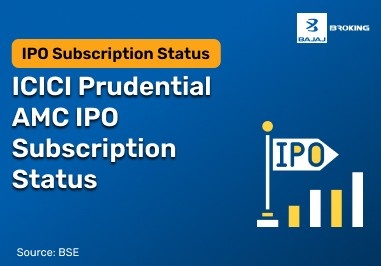Planning for retirement is one of the most important financial decisions, yet many people delay it until later in life. When you start early, you get more years to build your savings. Over time, this allows you to benefit from the power of long-term compounding.
A Public Provident Fund (PPF) has been a popular investment option for many years, particularly for those wanting secure, risk-free returns with government backing. It has a lock-in of 15 years, and a five-year extension in blocks is allowed. It is suitable for those wanting disciplined, long-term savings. The assured interest rate, tax-free return, and liberal contribution facility make it particularly ideal for individuals wishing to create a secure corpus in retirement.
Many first-time savers find it hard to predict how much they need to invest to reach their retirement goals. This is where tools like the PPF calculator simplify things. It can help you understand how your annual contributions to the Public Provident Fund can grow over time. By offering a clear estimate of your maturity amount and interest earned, it makes long-term planning more visual and practical.
With the PPF calculator, you can even test different investment scenarios. You can tweak the contribution amount, interest rate, or investment duration and see how it affects your final savings. This not only saves time and effort but also makes you confident about your finances. Whether you're starting small or investing the maximum limit of ₹1.5 lakh per year, this tool ensures that every rupee is aligned with your long-term financial needs.
Let’s explore how the PPF calculator works, why PPF is a good choice for planning for retirement, and how it stands against other options.
Why PPF Is an Ideal Choice for Retirement Planning
The Public Provident Fund (PPF) is one of the most trusted savings schemes in India. It offers investors a low-risk, long-term, stable investment option. Moreover, its government backing ensures effectively no risk, making it a dependable tool for planning for retirement.
Apart from it being low-risk, one of the key strengths of the PPF is its compounding structure. The interest earned each year is added to your balance, and future interest is calculated on this growing total. Over time, this snowballs into a steady and significant increase in your savings, even if you’re making modest annual contributions.
The scheme is also flexible when it comes to how much and how often you invest. You can start with as little as ₹500 or go up to ₹1.5 lakh in a financial year. Contributions can be made monthly or in a lump sum, based on what’s convenient for you. This flexibility helps you stay consistent without feeling financial constraint.
Tax efficiency is another major benefit. Investments in PPF up to ₹1.5 lakh qualify for deductions under Section 80C of the Income Tax Act. Plus, the interest earned and maturity amount are fully exempt from tax, giving it EEE status (Exempt-Exempt-Exempt), which very few instruments offer.
What adds to PPF’s appeal is the option to extend your account beyond the initial 15-year term. You can do this in blocks of five years, continuing to earn tax-free interest even after maturity. Fresh investments are not required during this period, but you are free to make voluntary contributions.
These are some of the reasons why many investors find PPF as a reliable choice to support future retirement needs.
How a PPF Calculator Helps You Estimate Your Retirement Needs
A PPF calculator makes long-term financial planning easier by giving you clarity about how your savings will grow. Here’s how it helps:
Gives you a maturity estimate: The calculator shows how much your investment will grow over your selected period, based on your yearly contribution and the current interest rate. This helps you understand the total amount you can expect at maturity.
Shows interest earned over time: It provides a yearly breakdown of how much interest is added to your account. This helps you track the power of compounding and how it builds your savings gradually.
Helps you decide the contribution amount: If you have a specific retirement target, you can work backwards using the calculator to figure out how much you should invest each year to reach that goal.
Allows scenario testing: You can adjust variables like investment amount, tenure, or contribution frequency to compare outcomes. This lets you find a contribution strategy that fits your budget and long-term goals.
Saves time and manual effort: There’s no need for complex calculations or spreadsheets. The calculator gives you accurate results instantly based on your inputs.
Helps with disciplined planning: Seeing how your money can grow encourages consistent investing. It helps you stay focused and motivated throughout your retirement planning journey.
Using this tool regularly ensures that your strategy stays aligned with your financial needs, especially as your goals or income change over time.
Comparing PPF with Other Retirement Investment Options
When retirement planning, while selecting an investing option, be sure to invest in something suitable for your long-term financial target, risk-bearing capacity, as well as flexibility requirement. PPF happens to be a trusted scheme, along with several other instruments such as the National Pension System (NPS), Employees' Provident Fund (EPF), as well as Equity Linked Savings Scheme (ELSS) mutual fund schemes.
Each of these comes with its own set of rules, tax advantages, and withdrawal conditions. Understanding how they compare can help you make a more informed decision about where and how to invest for the long term.
Here’s a side-by-side comparison of key features:
Features
| PPF
| NPS
| EPF
| Mutual Funds (ELSS)
|
Lock-in period
| 15 years
| Till age 60
| Till retirement
| 3 years
|
Returns
| Returns are fixed, set by government
| Returns are market-linked
| Returns are fixed, government-backed
| Returns are market-linked
|
Tax benefits
| Up to ₹1.5 lakh under Sec 80C
| Up to ₹2 lakh under Sec 80CCD(1) & (1B)
| Up to ₹1.5 lakh under Sec 80C
| Up to ₹1.5 lakh under Sec 80C
|
Tax on maturity
| Fully tax-free
| Partially taxable (annuity portion)
| Fully tax-free
| Taxable on gains
|
Contribution flexibility
| High
| High
| Based on individual salary
| High
|
Risk level
| Very low
| Moderate (depends on asset mix)
| Low
| High
|
While NPS and ELSS may offer potentially higher returns, they come with greater exposure to market risks and more complex withdrawal structures. PPF remains a solid choice for conservative investors who wish to prioritise capital safety and stable returns. Features like a long lock-in period, tax-free maturity, and low risk make it a very dependable retirement fund.
Example of a PPF Calculator in Use
Before you begin, estimate how much money you’ll need after retirement. This amount could differ from person to person as it depends on your lifestyle, expected inflation, healthcare costs, and any personal financial goals you wish to meet during those years. Once you get clarity on this amount, you can visit any free PPF calculator tool available online. And, with a few clicks, you can gauge your future savings. Doing this activity will show how your yearly contributions can grow into a retirement corpus over time with the power of compounding.
Let’s look at a practical example to understand how a PPF calculator works.
Step 1: Define the investment goal
Suppose you are a person aged 32 years and want to create a retirement corpus at age 60. You opt to invest ₹1.2 lakh every year in a PPF account over the next 30 years (15-year default period plus 15-year extension in three installments of 5 years).
Step 2: Use current interest rates
The ongoing PPF interest rate, as notified by the government, is 7.1% per annum. This is why we will use this fixed rate in the calculator for estimation purposes.
Step 3: Input the details in the PPF calculator
Now, enter your age, annual contribution of ₹1.2 lakh, and tenure of 30 years into the calculator. Based on this, here’s what the calculator projects:
Total amount invested: ₹36,00,000
Interest earned: ₹87,60,728 approx.
Maturity value: ₹1,23,60,728 approx.
Step 4: Run scenario comparisons
If you wish to build a larger corpus, you can plan to increase your annual contribution to ₹1.5 lakh. In this case, the maturity value will rise to approximately ₹1.55 crore. This clearly shows how increasing your yearly investment can significantly boost your retirement savings.
You can also use the calculator to see how changes in the interest rate or investment period affect your final corpus. For instance, if the interest rate drops to 6.8% or the investment duration is reduced to 20 years, your total returns will decrease accordingly.
This simple yet powerful tool helps you see the impact of your savings decisions over time.
Conclusion
Planning for retirement may feel overwhelming in the beginning. However, with a reliable option like the Public Provident Fund and access to digital tools, you can take charge of your financial future with more confidence. A PPF calculator helps you see how your savings will grow over time. It also allows you to make timely adjustments, whether that means increasing your contributions, extending your investment period, or realigning your plan to suit changing goals.
By visualising the growth of your money each year, this tool reduces future financial uncertainty. The secret is to begin early, be regular, and review your progress from time to time. Reviewing your savings plan annually ensures that it continues to suit your evolving needs and responsibilities.
Spending a mere few minutes with a PPF calculator today can translate into decades of financial peace during your golden years!














